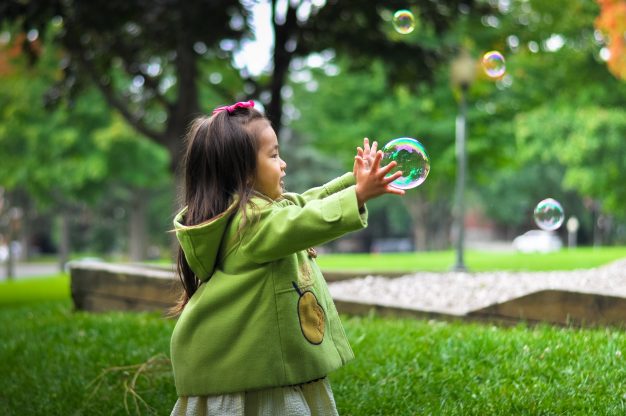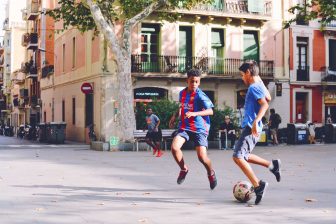
An information guide for designing outdoor play spaces
The 7 C’s of Young Children’s Outdoor Play Spaces is an information guide to help in the design of outdoor play spaces that support the development of young children and integrate the unique qualities of outdoor play. Development of the guide has been led by Susan Herrington, Professor of Architecture and Landscape Architecture at the University of British Columbia. Herrington’s research focuses on the role that landscape design plays in creating developmentally supportive play spaces for children, and how designed landscapes reflect our ideas of nature and culture.
Outdoor play spaces
The guide is informed by findings from a 5-year study of outdoor play spaces at 16 childcare centres in Vancouver, Canada. Children between the ages of 2 to 5 years old were observed as this age group makes up the largest population of children at most child care centres. This age group is also important because it is during these years that children experience developmental milestones such as increased physical ability, curiosity, imagination, memory, language, imitative play and cooperative play.
The study looked at the outdoor physical factors that contribute to both early childhood development and quality play and, examined to what degree these factors were present at these centres. The specific areas studied included:
- Size of the outdoor play spaces and where children played within these spaces.
- Types of play observed in the different play environments.
- What staff and children enjoyed about the play spaces.
- Presence of living things in the outdoor play environments.
- Amount of manipulable materials in the outdoor play environments.
As part of the study, researchers also looked at similar studies; documented field observations; interviewed early childhood educators and directors; observed the children; and, examined how policy effects the implementation of physical designs for outdoor play areas.
Design based on 7C criteria
The findings concluded that quality outdoor play means more than just play equipment. The findings form the basis of the 7C criteria:
- Character refers to the overall feel and design intent of the outdoor play space.
- Context refers to the small world of the play space itself, the larger landscape that surrounds the centre, and how they interact with each other.
- Connectivity indicates the physical, visual and cognitive connectivity of the play space itself.
- Change involves a range of different sized spaces designed in the play area and how the whole play space changes over time.
- Chance involves an occasion that allows something to be done; an opportunity for the child to create, manipulate, and leave an impression on the play space.
- Clarity combines physical legibility and perceptibility of image.
- Challenge refers to the physical and cognitive encounters that a play space provides.
These key elements build upon each other and should be considered by people who design outdoor play spaces. While the research primarily addresses 2 to 5 year olds, the researchers believe that many of the elements are relevant to play spaces for older children too.
Summarized from 7Cs: An Informational Guide to Young Children’s Outdoor Play Spaces by Outside Criteria (Susan Herrington, Chandra Lesmeister, Jamie Nicholls and Kate Stefiuk).
Author: Helen Davidson
Photo Credit: Leo Rivas-Micoud https://unsplash.com/photos/wtxcaDIdOCM




